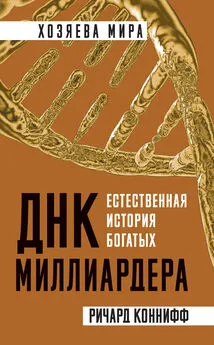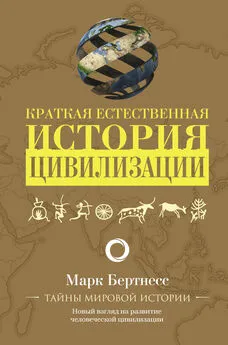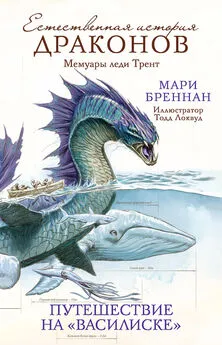Тор Хэнсон - Жужжащие. Естественная история пчёл
- Название:Жужжащие. Естественная история пчёл
- Автор:
- Жанр:
- Издательство:Альпина нон-фикшн
- Год:2020
- Город:Москва
- ISBN:978-5-0013-9261-3
- Рейтинг:
- Избранное:Добавить в избранное
-
Отзывы:
-
Ваша оценка:
Тор Хэнсон - Жужжащие. Естественная история пчёл краткое содержание
В книге «Жужжащие» Тор Хэнсон приглашает нас в путешествие, начавшееся 125 млн лет назад, когда первая оса отважилась кормить свое потомство цветочной пыльцой. Эти насекомые — от медоносных пчел и шмелей до менее известных земляных, солончаковых, роющих, пчел-листорезов и пчел-каменщиц — издавна неотделимы от урожайности наших садов и полей, от нашей мифологии, да и от самого нашего существования. Пчелы дарят нам сладость и свет, красоту цветов и почти треть нашего рациона. И как ни печально, сейчас они находятся под угрозой исчезновения.
Содержательная и завораживающая книга Тора Хэнсона показывает, почему все виды пчел — настоящее чудо природы, которое мы должны ценить и защищать. Прочитайте эту книгу, и пчелы никогда больше не будут для вас невидимками.
Жужжащие. Естественная история пчёл - читать онлайн бесплатно ознакомительный отрывок
Интервал:
Закладка:
Danforth, B. N., and G. O. Poinar, Jr. 2011. Morphology, classification, and antiquity of Melittosphex burmensis (Apoidea: Melittosphecidae) and implications for early bee evolution. Journal of Paleontology 85: 882–891.
Danforth, B. N., S. Sipes, J. Fang, and S. G. Brady. 2006. The history of early bee diversification based on five genes plus morphology. Proceedings of the National Academy of Sciences 103: 15118–15123.
Darwin, C. 1859. On the Origin of Species by Means of Natural Selection . (Reprint of 1859 first edition.) Mineola, NY: Dover.
_____. 1877. The Various Contrivances by Which Orchids Are Fertilised by Insects , 2nd ed. New York: D. Appleton and Company.
Dean, W. R. J., W. R. Siegfried, and I. A. W. MacDonald. 1990. The fallacy, fact, and fate of guiding behavior in the Greater Honeyguide. Conservation Biology 4: 99–101.
Dicks, L. V., B. Viana, R. Bommarco, B. Brosi, et al. 2016. Ten policies for pollinators. Science 354: 975–976.
Dillon, M. E., and R. Dudley. 2014. Surpassing Mt. Everest: Extreme flight performance of alpine bumble-bees. Biology Letters 10. https://doi.org/10.1098/rsbl.2013.0922.
Di Prisco, G., D. Annoscia, M. Margiotta, R. Ferrara, et al. 2016. A mutualistic symbiosis between a parasitic mite and a pathogenic virus undermines honey bee immunity and health. Proceedings of the National Academy of Sciences 113: 3203–3208.
Doyle, A. C. 1917. His Last Bow: A Reminiscence of Sherlock Holmes . New York: Review of Reviews Company.
Doyle, J. A. 2012. Molecular and fossil evidence on the origin of angiosperms. Annual Review of Earth and Planetary Sciences 40: 301–326.
Driscoll, C. A., D. W. Macdonald, and S. J. O’Brian. 2009. From wild animals to domestic pets, an evolutionary view of domestication. Proceedings of the National Academy of Sciences 106: 9971–9978.
Eckert, J. E. 1933. The flight range of the honeybee. Journal of Agricultural Research 47: 257–286.
Eilers E. J., C. Kremen, S. Smith Greenleaf, A. K. Garber, et al. 2011. Contribution of pollinator-mediated crops to nutrients in the hu- man food supply. PLoS ONE 6: e21363. https://doi.org/10.1371/journal.pone.0021363.
Engel, M. S. 2000. A new interpretation of the oldest fossil bee (Hymenoptera: Apidae). American Museum Novitiates , no. 3296, 11 pp.
_____. 2001. A monograph of the Baltic amber bees and evolution of the apoidea (Hymenoptera). Bulletin of the American Museum of Natural History 259, 192 pp.
Escobar, T. 2007 . Curse of the Nemur: In Search of the Art, Myth, and Ritual of the Ishir. Pittsburgh: University of Pittsburgh Press.
Evangelista, C., P. Kraft, M. Dacke, J. Reinhard, et al. 2010. The moment before touchdown: Landing manoeuvres of the honeybee Apis mellifera. Journal of Experimental Biology 213: 262–270.
Evans, E., R. Thorp, S. Jepsen, and S. H. Black. 2008. Status Review of Three Formerly Common Species of Bumble Bee in the Subgenus Bombus. Portland, OR: Xerces Society for Invertebrate Conservation, 63 pp.
Evans, H. E., and K. M. O’Neill. 2007. The Sand Wasps: Natural History and Behavior . Cambridge, MA: Harvard University Press.
Fabre, J. E. 1915. Bramble-Bees and Others . New York: Dodd, Mead.
_____. 1916. The Mason-Bees . New York: Dodd, Mead.
Fenster, C. B., W. X. Armbruster, P. Wilson, M. R. Dudash, et al. 2004. Pollination syndromes and floral specialization. Annual Review of Ecology, Evolution, and Systematics 35: 375–403.
Filella, I., J. Bosch, J. Llusià, R. Seco, et al. 2011. The role of frass and cocoon volatiles in host location by Monodontomerus aeneus , a parasitoid of Megachilid solitary bees. Environmental Entomology 40: 126–131.
Fine, J. D., D. L. Cox-Foster, and C. A. Mullein. 2017. An inert pesticide adjuvant synergizes viral pathogenicity and mortality in honey bee larvae. Scientific Reports 7. https://doi.org/10.1038/srep40499.
Friedman, W. E. 2009. The meaning of Darwin’s «Abominable Mystery.» American Journal of Botany 96: 5–21.
Friis, E. M., P. R. Crane, and K. R. Pedersen. 2011. Early Flowers and Angiosperm Evolution . Cambridge: Cambridge University Press.
Garibaldi, L. A., I. Steffan-Dewenter, R. Winfree, M. A. Aizen, et al. 2013. Wild pollinators enhance fruit set of crops regardless of honey bee abundance. Science 339: 1608–1611.
Gegear, R. J., and J. G. Burns. 2007. The birds, the bees, and the virtual flowers: Can pollinator behavior drive ecological speciation in flowering plants? American Naturalist 170. https://doi.org/10.1086/521230.
Genersch, E., C. Yue, I. Fries, and J. R. de Miranda. 2006. Detection of Deformed wing virus , a honey bee viral pathogen, in bumble bees ( Bombus terrestris and Bombus pascuorum ) with wing deformities. Journal of Invertebrate Pathology 91: 61–63.
Gess, S. K. 1996. The Pollen Wasps: Ecology and Natural History of the Masarinae . Cambridge, MA: Harvard University Press.
Gess, S. K., and F. W. Gess. 2010. Pollen Wasps and Flowers in Southern Africa . Pretoria: South African National Biodiversity Institute.
Ghazoul, J. 2005. Buzziness as usual? Questioning the global pollination crisis. TRENDS in Ecology and Evolution 20: 367–373.
Glaum, P., M. C. Simayo, C. Vaidya, G. Fitch, et al. 2017. Big city Bombus: Using natural history and land-use history to find significant environmental drivers in bumble-bee declines in urban development. Royal Society Open Science 4: 170156.
Goor, A. 1967. The history of the date through the ages in the Holy Land. Economic Botany 21: 320–340.
Goubara, M., and T. Takasaki. 2003. Flower visitors of lettuce under field and enclosure conditions. Applied Entomology and Zoology 38: 571–581.
Goulson, D. 2010. Impacts of non-native bumblebees in Western Europe and North America. Applied Entomology and Zoology 45: 7–12.
Goulson, D., E. Nicholls, C. Botías, and E. L. Rotheray. 2015. Bee declines driven by combined stress from parasites, pesticides, and lack of flowers . Science 347. https://doi.org/10.1126/science.1255957.
Goulson, D., and J. C. Stout. 2001. Homing ability of the bumblebee Bombus terrestris (Hymenoptera: Apidae). Apidologie 32: 105–111.
Graves, R. 1960. The Greek Myths . London: Penguin.
Greceo, M. K., P. M. Welz, M Siegrist, S. J. Ferguson, et al. 2011. Description of an ancient social bee trapped in amber using diagnostic radioentomology. Insectes Sociaux 58: 487–494.
Griffin, B. 1997a. Humblebee Bumblebee . Bellingham, WA: Knox Cellars Publishing.
_____. 1997b. The Orchard Mason Bee . Bellingham, WA: Knox Cellars Publishing.
Grimaldi, D. 1996. Amber: Window to the Past . New York: Harry N. Abrams.
_____. 1999. The co-radiations of pollinating insects and angiosperms in the Cretaceous. Annals of the Missouri Botanical Garden 86: 373–406.
Grimaldi, D., and M. Engel. 2005. Evolution of the Insects . New York: Cambridge University Press.
Hallmann, C. A., R. P. B. Foppen, C. A. M. van Turnhout, H. de Kroon, et al. 2014. Declines in insectivorous birds are associated with high neonicotinoid concentrations. Nature 511: 341–343.
Hanson, T., and J. S. Ascher. 2018. An unusually large nesting aggregation of the digger bee Anthophora bomboides Kirby, 1838 (Hymenoptera: Apidae) in the San Juan Islands, Washington State. Pan-Pacific Entomologist 94: 4-16.
Hedtke, S. M., S. Patiny, and B. N. Danorth. 2013. The bee tree of life: A supermatrix approach to apoid phylogeny and biogeography. BMC Evolutionary Biology 13: 138.
Heinrich, B. 1979. Bumblebee Economics . Cambridge, MA: Harvard University Press.
Henderson, A. 1986. A review of pollination studies in the Palmae. Botanical Review 52: 221–259.
Herodotus. 1997. The Histories . Translated by G. Rawlinson. New York: Knopf.
Hershorn, C. 1980. Cosmetics queen Mary Kay delivers a megabuck message to her sales staff: ‘Women can do anything.’ People , http://people.com/archive/cosmetics-queen-mary-kay-delivers-a-megabuck-message-to-her-sales-staff-women-can-do-anything-vol-13-no-17.
Hoballah, M. E., T. Gübitz, J. Stuurman, L. Broger, et al. 2007. Single gene-mediated shift in pollinator attraction in Petunia. Plant Cell 19: 779–790.
Hogue, C. L. 1987. Cultural entomology. Annual Review of Entomology 32: 181–199.
Houston, T. F. 1984. Biological observations of bees in the genus Ctenocolletes (Hymenoptera: Stenotritidae). Records of the Western Australian Museum 11: 153–172.
How, M. J., and J. M. Zanker. 2014. Motion camouflage induced by zebra stripes. Zoology 117: 163–170.
Ichikawa, M. 1981. Ecological and sociological importance of honey to the Mbuti net hunters, Eastern Zaire. African Study Monographs 1: 55–68.
Iwasa, T., N. Motoyama, J. T. Ambrose, and R. M. Roe. 2004. Mechanism for the differential toxicity of neonicotinoid insecticides in the honey bee , Apis mellifera. Crop Protection 23: 371–378.
Jablonski, P. G., H. J. Cho, S. R. Song, C. K. Kang, et al. 2013. Warning signals confer advantage to prey in competition with predators: Bumblebees steal nests from insectivorous birds. Behavioral Ecology and Sociobiology 67: 1259–1267.
Jacob, F. 1977. Evolution and tinkering. Science 196: 1161–1166.
Jones, H. A. 1927. Pollination and life history studies of lettuce ( Lactuca sativa L.). Hilgardia 2: 425–479.
Jones, K. N., and J. S. Reithel. 2001. Pollinator-mediated selection on a flower color polymorphism in experimental populations of Antirrhinum (Scrophulariaceae). American Journal of Botany 88: 447–454.
Kajobe, R., and D. W. Roubik. 2006. Honey-making bee colony abundance and predation by apes and humans in a Uganda forest reserve. Biotropica 38: 210–218.
Kerr, J. T., A. Pindar, P. Galpern, L Packer, et al. 2015. Climate change impacts on bumblebees converge across continents. Science 349: 177–180.
Kevan, P. G., L. Chittka, and A. G. Dyer. 2001. Limits to the salience of ultraviolet: Lessons from colour vision in bees and birds. Journal of Experimental Biology 204: 2571–2580.
Keynes, R., ed. 2010. Charles Darwin’s Zoology Notes and Specimen Lists from H. M. S. Beagle. Cambridge: Cambridge University Press.
Kirchner, W. H., and J. Röschard. 1999. Hissing in bumblebees: Aninterspecific defence signal. Insectes Sociaux 46: 239–243.
Klein, A., C. Brittain, S. D. Hendrix, R. Thorp, et al. 2012. Wild pollination services to California almond rely on semi-natural habitat. Journal of Applied Ecology 49: 723–732.
Klein, A., B. E. Vaissière, J. H. Cane, I. Steffan-Dewenter, et al. 2007. Importance of pollinators in changing landscapes for world crops. Proceedings of the Royal Society B 274: 303–313.
Koch, J. B., and J. P. Strange. 2012. The status of Bombus occidentalis and B. moderatus in Alaska with special focus on Nosema bombi incidence. Northwest Science 86: 212–220.
Kritsky, G. 1991. Darwin’s Madagascan hawk moth prediction. American Entomologist 37: 205–210.
Krombein, K., and B. Norden. 1997a. Bizarre nesting behavior of Krombeinictus nordenae Leclercq (Hymenoptera: Sphecidae, Crabroninae). Journal of South Asian Natural History 2: 145–154.
Читать дальшеИнтервал:
Закладка:
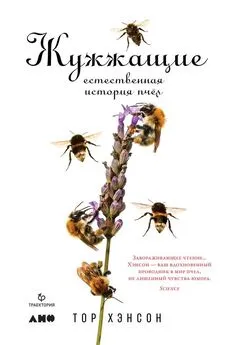

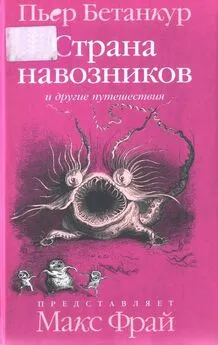
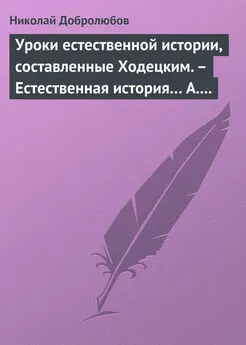



![Мари Бреннан - Естественная история драконов. Мемуары леди Трент. Тропик Змеев [litres с оптимизированной обложкой]](/books/1095234/mari-brennan-estestvennaya-istoriya-drakonov-memuar.webp)
